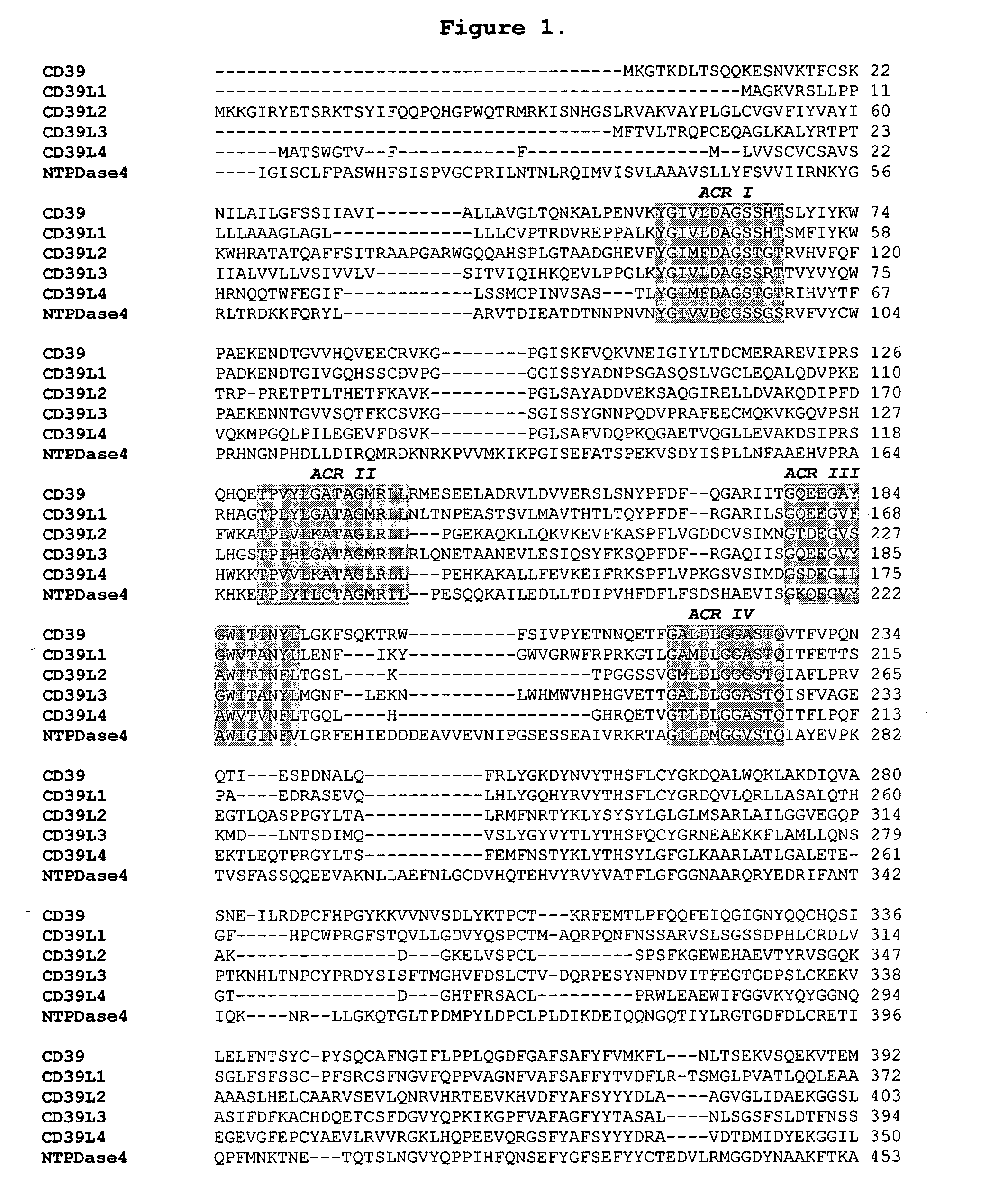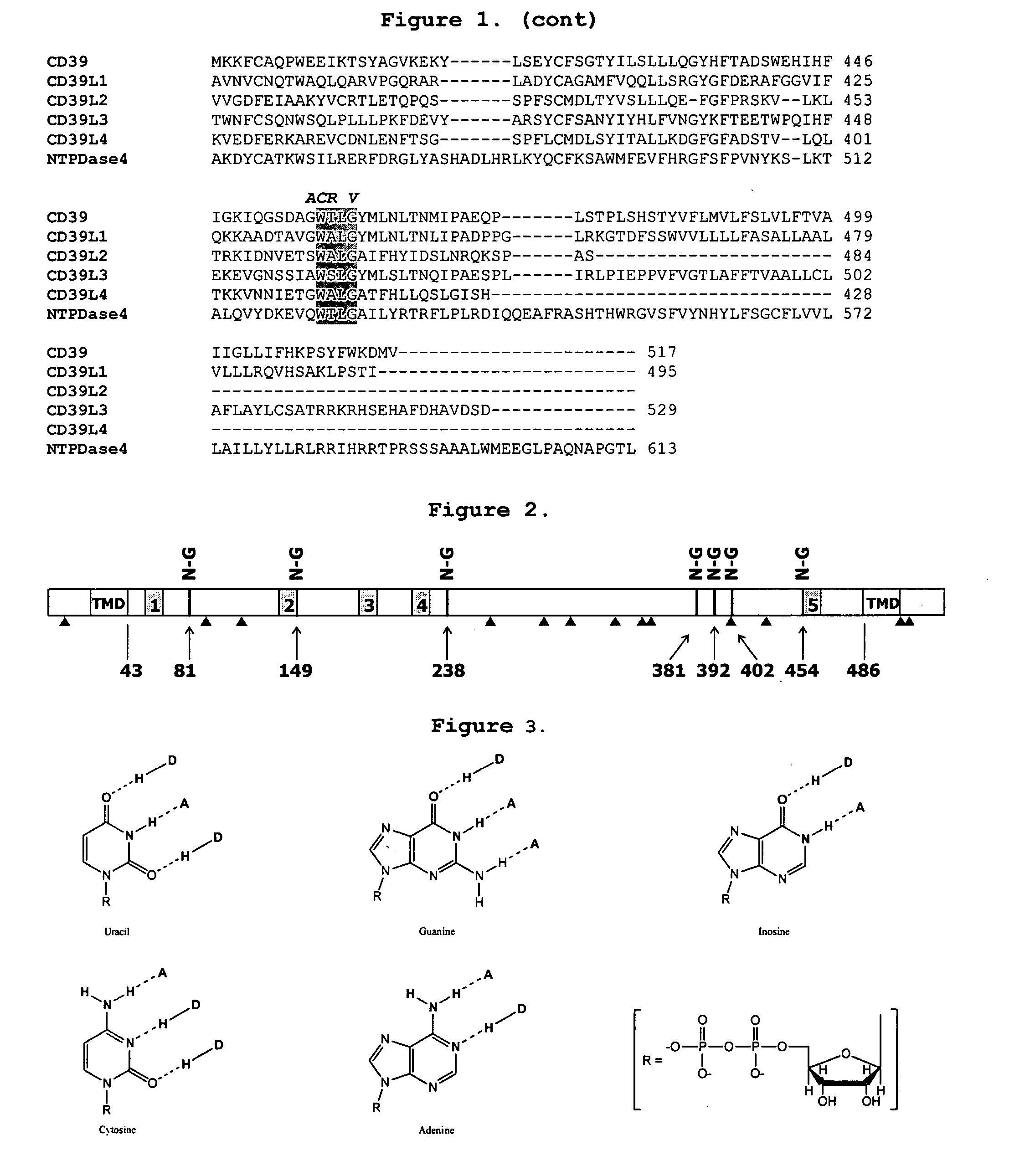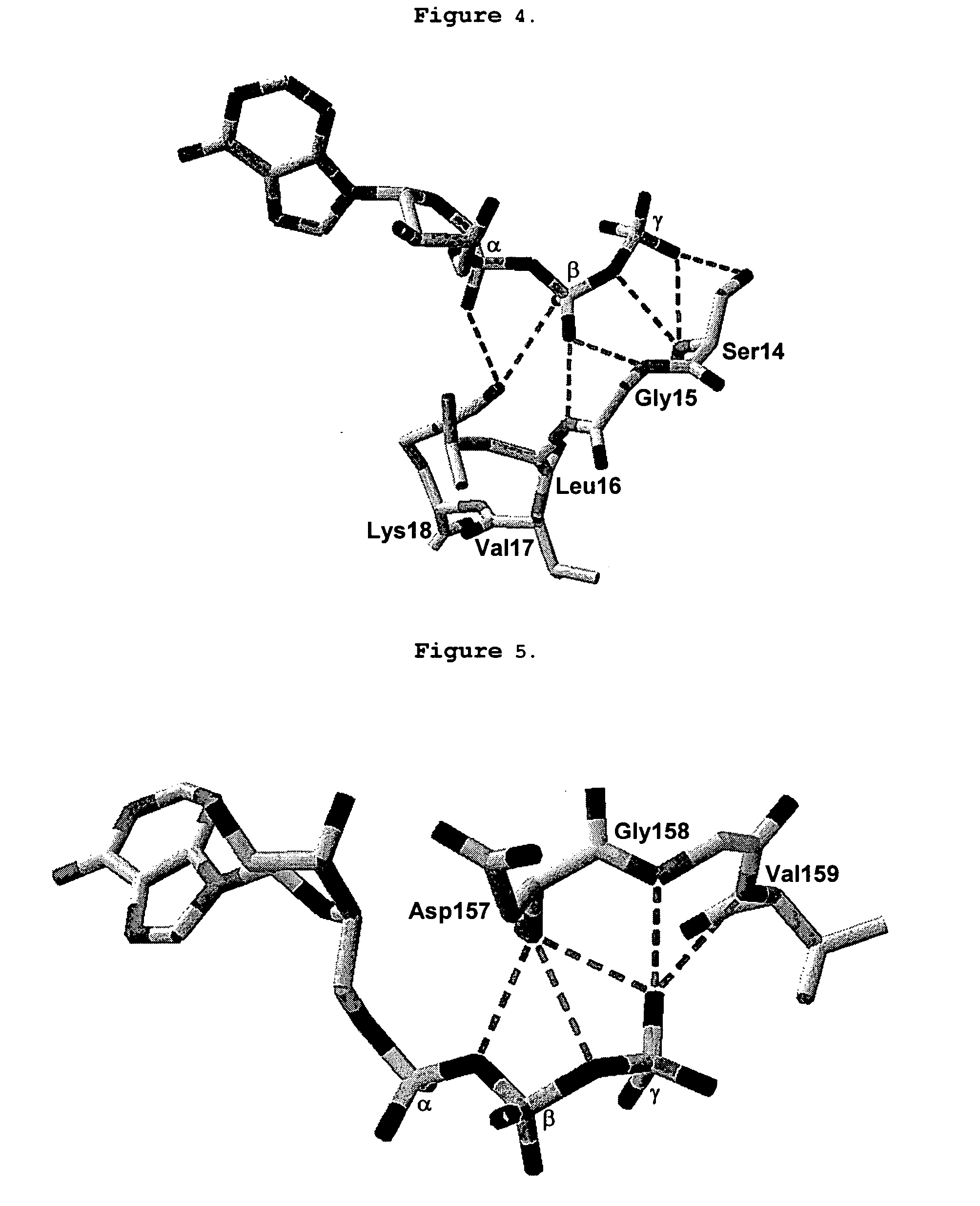Design and therapeutic use of adpase enhanced apyrases
- Summary
- Abstract
- Description
- Claims
- Application Information
AI Technical Summary
Benefits of technology
Problems solved by technology
Method used
Image
Examples
example 1
[0127] Cloning of CD39
[0128] CD39 has been previously identified and cloned (Maliszerski, C. R., et. al., J. Immunol. (1994) 153:3574). Cloning of CD39 can be accomplished by numerous methods available to one skilled in the art. For example, total RNA or poly-A RNA can be purified from human tissues samples abundant in CD39 expression (for example placenta or spleen tissue) and used as a template for gene specific RT-PCR. Additionally, pre-made cDNA libraries can be purchased from commercial sources and PCR can be employed to amplify the CD39 cDNA directly. Still further, synthetic oligos can be constructed to create a synthetic gene for CD39 based on sequence information available for CD39 (Genbank accession # np—001767). Additionally, full length cDNA clones can be obtained from, for example, the IMAGE clone consortium (which can be found on the web at: image.llnl.gov / ).
[0129] The full length cDNA clone for CD39 was isolated by PCR from human placenta large insert cDNA library L...
example 2
Cloning of CD39L3
[0131] CD39L3 has been determined to be an isozyme of CD39 that is preferably expressed in human brain tissue. Chadwick and Frischauf (Genomics (1998) 50:357-367) have studied the tissue distribution of several CD39 family members including CD39L3. Based on their observations it is clear that CD39L3 is predominately expressed in Human brain and pancreas tissues and represent preferred source material for cloning CD39L3. Other tissue sources useful for cloning CD39L3 include but are not limited to placenta, spleen, prostate, ovary, small intestine and colon.
[0132] Cloning of CD39L3 can be accomplished by numerous methods available to one skilled in the art. For example, total RNA or poly-A RNA can be purified from source tissues mentioned supra and used as a template for gene specific RT-PCR. Additionally, pre-made cDNA libraries can be purchased from commercial sources and PCR can be employed to amplify the CD39L3 cDNA directly. Still further, synthetic oligos can...
example 3
Design and Cloning of a Soluble Form of CD39
[0135] The soluble form of CD39 (solCD39), generated by removing the N-terminal 37 amino acids and C-terminal 33 amino acids, has been previously described. (Gayle, R. B., et al., J. Clin. Invest. (1998) 101:1851-1859). pAPT7948 was used as atemplate for PCR to generate solCD39 using the PCR primers CD39 Sma 5′ (SEQ. ID. NO: 13) and CD39 Sma 3′ (SEQ. ID. NO: 14). In order to facilitate cloning of solCD39 into vectors suitable for expression in mammalian cells (for example, CHO, COS, HEK293), a SmaI site was introduced in frame with the ATG translation initiation codon.
[0136] The PCR product was digested with SmaI and subcloned directly into pSP72 (Promega Madison, Wis.) resulting in plasmid pAPT 7987. The sequence of the soluble form of CD39 was re-confirmed. N-terminal translational fusions of solCD39 with, for example, secretion signals can be easily obtained by removing the solCD39 open reading frame by SmaI restriction enzyme digesti...
PUM
| Property | Measurement | Unit |
|---|---|---|
| Fraction | aaaaa | aaaaa |
| Fraction | aaaaa | aaaaa |
| Fraction | aaaaa | aaaaa |
Abstract
Description
Claims
Application Information
 Login to View More
Login to View More - R&D Engineer
- R&D Manager
- IP Professional
- Industry Leading Data Capabilities
- Powerful AI technology
- Patent DNA Extraction
Browse by: Latest US Patents, China's latest patents, Technical Efficacy Thesaurus, Application Domain, Technology Topic, Popular Technical Reports.
© 2024 PatSnap. All rights reserved.Legal|Privacy policy|Modern Slavery Act Transparency Statement|Sitemap|About US| Contact US: help@patsnap.com










